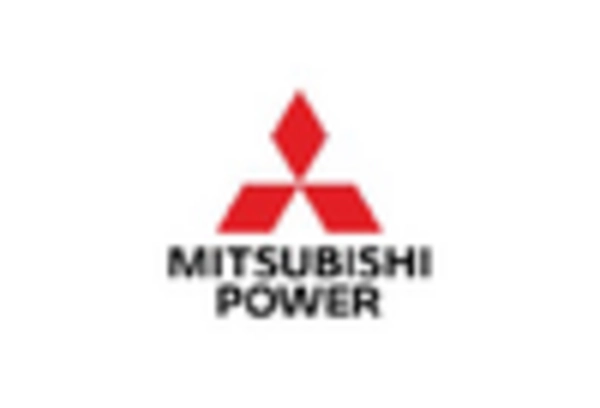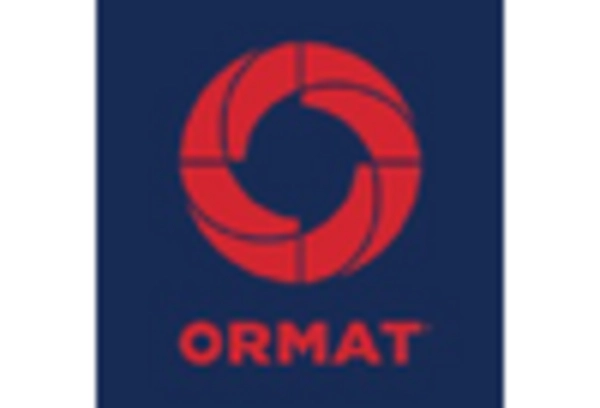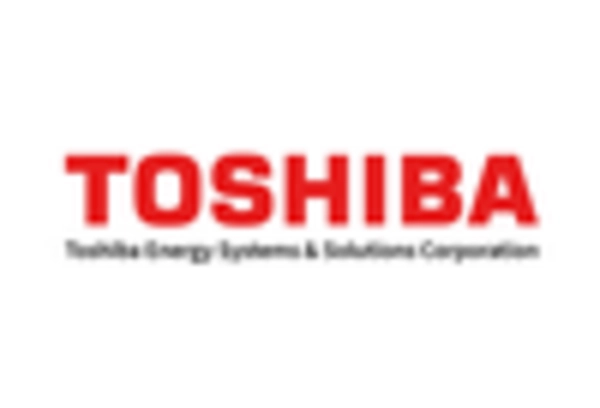Rising Energy Demand
The increasing energy demand in the US is a pivotal driver for the geothermal turbines market. As the population grows and industrial activities expand, the need for sustainable and reliable energy sources intensifies. Geothermal energy, being a renewable resource, offers a consistent supply, which is crucial for meeting this demand. According to the US Energy Information Administration, renewable energy sources, including geothermal, are projected to account for a larger share of the energy mix by 2025. This shift is likely to enhance the adoption of geothermal turbines, as they provide a stable and efficient means of harnessing geothermal energy. The geothermal turbines market is thus positioned to benefit from this rising energy demand, as stakeholders seek to diversify their energy portfolios and reduce reliance on fossil fuels.
Technological Innovations
Technological innovations are transforming the geothermal turbines market, enhancing efficiency and reducing costs. Advances in drilling techniques, such as enhanced geothermal systems, allow for the extraction of geothermal energy from previously inaccessible resources. These innovations not only improve the feasibility of geothermal projects but also lower the levelized cost of electricity (LCOE) associated with geothermal energy. As of 2025, the LCOE for geothermal energy is projected to decrease, making it more competitive with other renewable sources. Furthermore, the development of more efficient turbine designs is likely to increase energy output, further stimulating market growth. The geothermal turbines market stands to gain from these technological advancements, as they enable more projects to be economically viable and attract investment.
Government Incentives and Funding
Government incentives and funding play a crucial role in the geothermal turbines market. Various federal and state programs are designed to promote the development of renewable energy sources, including geothermal. Tax credits, grants, and loan guarantees are among the financial mechanisms that encourage investment in geothermal projects. For instance, the Investment Tax Credit (ITC) provides a significant financial incentive for geothermal energy developers, which can enhance project feasibility. As the US government continues to prioritize renewable energy, the geothermal turbines market is likely to benefit from increased funding opportunities. This financial support not only aids in the initial capital costs but also fosters innovation and research within the industry, potentially leading to further advancements in geothermal technology.
Growing Awareness of Energy Security
The growing awareness of energy security is emerging as a vital driver for the geothermal turbines market. As geopolitical tensions and fluctuations in fossil fuel prices create uncertainty, there is a heightened focus on energy independence. Geothermal energy, being locally sourced, offers a stable and secure energy supply, reducing reliance on imported fuels. This aspect is particularly appealing to policymakers and energy producers in the US, as it aligns with national interests in energy security. The geothermal turbines market is likely to see increased interest from both public and private sectors as they seek to mitigate risks associated with energy supply disruptions. This trend may lead to a more robust investment landscape for geothermal projects, further solidifying its role in the US energy portfolio.
Environmental Sustainability Initiatives
The growing emphasis on environmental sustainability is significantly influencing the geothermal turbines market. With increasing awareness of climate change and its impacts, there is a strong push towards cleaner energy solutions. Geothermal energy is recognized for its low carbon footprint, making it an attractive option for reducing greenhouse gas emissions. The US government has set ambitious targets for reducing emissions, which could lead to increased investments in renewable energy technologies, including geothermal. As a result, the geothermal turbines market is likely to experience growth as businesses and governments seek to align with sustainability goals. The integration of geothermal energy into the energy mix is expected to play a crucial role in achieving these environmental objectives, thereby driving the market forward.

















Leave a Comment